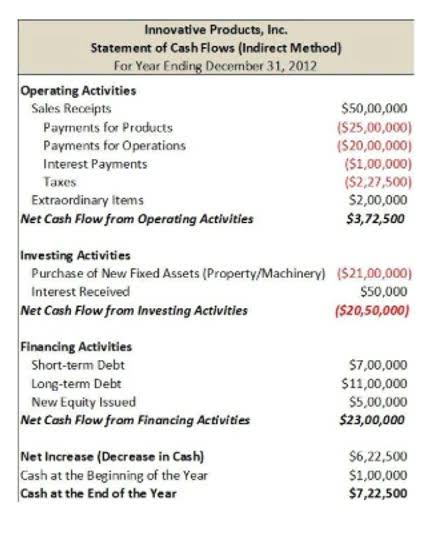
Creditors, investors, and lenders use balance sheets to understand the debt position of your business and analyse if they can give more credit to your firm. On the other hand, the Income Statement is used by such stakeholders to see if the company is making enough profits to pay off its debts. Business entities may choose to track pre-tax earnings over net income as it is a better measure to evaluate business performance. This is because things such as tax deductions vary from year to year and can impact business earnings, thus not giving a true and fair view of the profitability of your business. You must remember that to calculate gross profit, only variable costs are taken into consideration, meaning the costs that change with the change in the level of output. Therefore, all you need to do is account for these items that form part of COGS from the trial balance report, calculate COGS, and put the resulting figure in the COGS section of the income statement.
Test Assumptions and Scenario Analysis
- Master the intricacies of accounting for gyms with this comprehensive guide.
- Employers are required to withhold income taxes from their employees’ wages and remit them periodically along with employer-paid taxes like Social Security and Medicare contributions.
- For instance, if a gym offers both basic and premium memberships with varying prices, it is important to correctly allocate each payment based on the member’s chosen package.
- In this article, we’ll explore the importance of a gym mission statement and provide you with 35 inspiring examples to help you create your own.
- Everything you’ll need to impress investors, lenders, potential partners, or advisors.
It would be hard to create a sales forecast with a newly opened business like gym and fitness club. This is simply because the statistics that will be provided will be on a short term basis. The break-even point tells you how many memberships or sessions you need to sell to cover your costs. Positive cash flow is vital for day-to-day operations, while a good equipment utilization rate indicates efficient management of your gym resources.
- This statement tracks the expected flow of cash into and out of your business.
- When planning your gym capital expenditures, it is important to consider the long-term value that the asset will bring to your business.
- Understanding the unique chart of accounts specific to gyms helps streamline the recording and reporting process, ensuring accurate financial data for decision-making and analysis.
- For example, a doctor derives operating revenue by providing medical treatment whereas a manufacturer of furniture generates operating revenue through sales of such furniture.
- At NPE, we have a P&L chart of accounts template and example P&L that we show our fitness business clients, and lessons on how to use a P&L to make good business decisions.
- Also, assess various financing options and develop a clear strategy to secure funding.
- A strong income statement solves the main purpose of reporting your company’s ability to generate profits within a certain accounting period.
Forecast revenue
- By performing test assumptions and sensitivity analysis, you can adjust your strategies accordingly to mitigate risks, optimize returns, and make well-informed business decisions.
- No worries, all these indicators are “checked” in our financial plan, and you will be able to adjust them accordingly.
- One important aspect of tax compliance is accurately determining an individual’s employment status – whether they are classified as an employee or an independent contractor.
- It is crucial for gym owners to implement an efficient timekeeping system to ensure accurate record-keeping.
- This purpose should clearly articulate what sets your fitness facility apart from others in the industry.
A comprehensive understanding of the financial aspects involved in running a gym is fundamental for effective decision-making and long-term sustainability. Regularly reviewing your profit and loss statement, balance sheet, and cash flow statement can provide insights into your financial health and help you make informed business decisions. A Profit and Loss (P&L) forecast (also called Income Statement) is a financial tool that projects the expected revenue and expenses of a business over a given period of time, typically a year. It’s an important part of a gym’s financial plan, as it can help you understand how much money you can expect to make or lose, and how much you will need to invest in order to become profitable. Managing expenses is essential for maintaining a healthy bottom line in your gym.
Basic Accounting Principles for Gyms
This technology can incorporate barcode scanning capabilities to accurately record sales transactions and update inventory counts instantaneously. One important aspect of tax compliance is accurately determining an individual’s employment status – whether they are classified as an employee or an independent contractor. Misclassification can lead to tax liabilities and potential legal complications later on if challenged by taxing authorities. Gym owners must adhere to https://www.bookstime.com/ regulatory requirements for such programs, ensuring they comply with contribution limits set by government entities like the Internal Revenue Service (IRS). Proper accounting practices include accurately tracking and reporting employee contributions while ensuring that payroll deductions align with established guidelines. With salaried employees, a predetermined amount is paid periodically regardless of the actual number of hours worked within a defined pay period.

This way, you can easily create customized financial projections for your new gym venture. Gyms have unique expenses such as high-quality fitness equipment, continuous facility maintenance, and specific health and safety standards. Their revenue can also vary significantly – consider how New Year resolutions might spike gym memberships, while other periods might be less active. This contrasts with, for example, a grocery store, where product demand might be more constant and predictable. That’s why the financial plan our team has developed is specifically tailored to the gym business. A financial plan can provide valuable insights akin to perfecting a fitness routine.
Gym Marketing

Regular maintenance and repair costs must be budgeted for to keep the equipment in top condition while minimizing downtime. It is essential to establish preventive maintenance protocols to prolong equipment lifespan and avoid costly repairs or replacements. Gym owners must negotiate favorable terms and consider gym income statement factors such as location, size, and proximity to target customers. Additionally, utilities such as electricity, water, and gas are recurring expenses that need to be monitored closely. Using accounting software can simplify your bookkeeping, improve accuracy, and provide you with valuable financial insights.
- Emphasize what makes your gym unique, whether it’s innovative fitness programs, community involvement, or exceptional customer service.
- Typically, it’s an illustration of how well your gym is generating cash.
- The cost structure of a gym business includes several key components, including equipment, rent or mortgage, staffing and marketing.
- A gym mission statement serves as the heart of your fitness brand, defining your purpose and values while setting the tone for everything you do.
- Typically, your business’s income statement reveals how the revenues your business earns are turned into net earnings.
Gym Financial Projection – Profit & Loss Statement
In many locations, you’ll need to register your business with the appropriate local, state, or national authorities, and obtain any necessary licenses or permits. This process may include obtaining an Employer Identification Number (EIN) from the IRS if you’re in the U.S., which you’ll use for tax purposes. It’s important to note that the P&L forecast is based on certain assumptions and predictions, and it’s not always accurate. As you can see, you have your initial investment $50k and added another $25k in value to your company. That’s how much your business is worth, assuming you have a 100% stake in the equity of the business.

Different sources of revenue for gyms (membership fees, personal training, classes, etc.)
